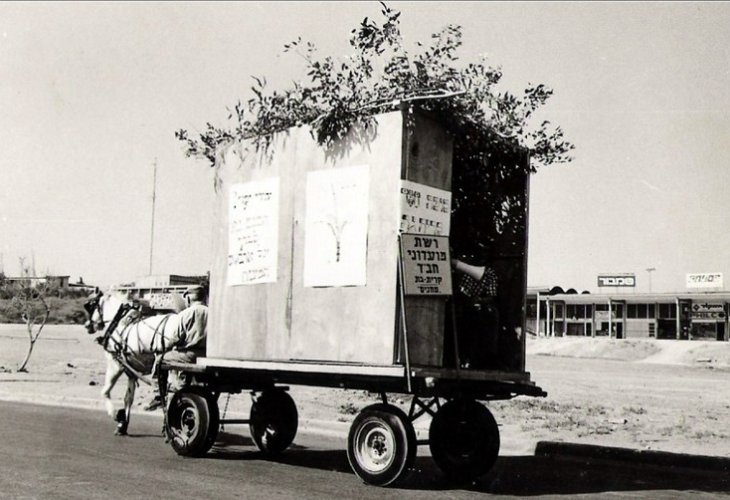Personal Stories
A Sukkah on Wheels: One Man’s Mission After the Holocaust
A Holocaust survivor built a sukkah on his wagon to help others fulfill the mitzvah of Sukkot with joy and faith.
 Yechiel Michel Tessler z"l in his famous sukkah 50 years ago (Credit: Itai Lidsky)
Yechiel Michel Tessler z"l in his famous sukkah 50 years ago (Credit: Itai Lidsky)An old photograph, sent in for the “Most Beautiful Sukkah of 2017” competition, captured something much deeper than decorations. It captured a story of hope, faith, and resilience. In the picture, taken over 50 years ago, we see Yechiel Michel Tessler with a sukkah built on top of his horse-drawn wagon. It’s beautifully decorated and covered in signs inviting Jews to come bless the Four Species (arba’at haminim), a central mitzvah of the Sukkot holiday.
The photo was submitted by Itai Lidsky, Tessler’s grandson, who shared the moving family story behind it.
Before the Holocaust, Yechiel Michel Tessler was a young man learning in a yeshiva (Jewish religious school) while also working as an apprentice tailor. When the war broke out, his life was torn apart. He lost his wife and children, and was sent first to labor camps, then eventually to Auschwitz. Miraculously, he survived. When the Soviet army liberated the camp, he was among those who walked out alive.
After the war, he returned to his hometown, only to find it destroyed and empty. With nowhere to return to, he and his brother went on to a nearby city where they had relatives. There, he met the woman who would become his second wife, and they started a new chapter together.
In 1957, Yechiel Michel and his wife immigrated to Israel and settled in a modest housing project in Kiryat Gat. To support his family, he worked in transportation using a simple horse-drawn wagon. In the summers, he sold watermelons to make a living.
But when Sukkot came around, the wagon became something entirely different.
“With help from the local Chabad boys, he would build a sukkah on top of the wagon,” recalls his grandson, Itai. “Then he would travel around Kiryat Gat, giving people the chance to sit in the sukkah and fulfill the mitzvah of shaking the Four Species.”
In the photo, you can clearly see the handmade signs hanging on the sides of the sukkah, warmly inviting the public to come and bless the arba’at haminim—the lulav, etrog, hadassim, and aravot.
“Today, we might learn in halacha (Jewish law) about someone who builds a sukkah on a wagon, like in Chapter 627, law 2 of the laws of Sukkah. However, we don’t always realize that this was once a real way people lived and kept mitzvot,” says Itai. “This photo shows that world in the most powerful and personal way.”
Yechiel Michel Tessler didn’t just survive the war, he brought life, mitzvot, and Jewish pride back into the world. On a simple wagon with a holy mission, he helped other Jews feel the joy of Sukkot, one neighborhood at a time.

